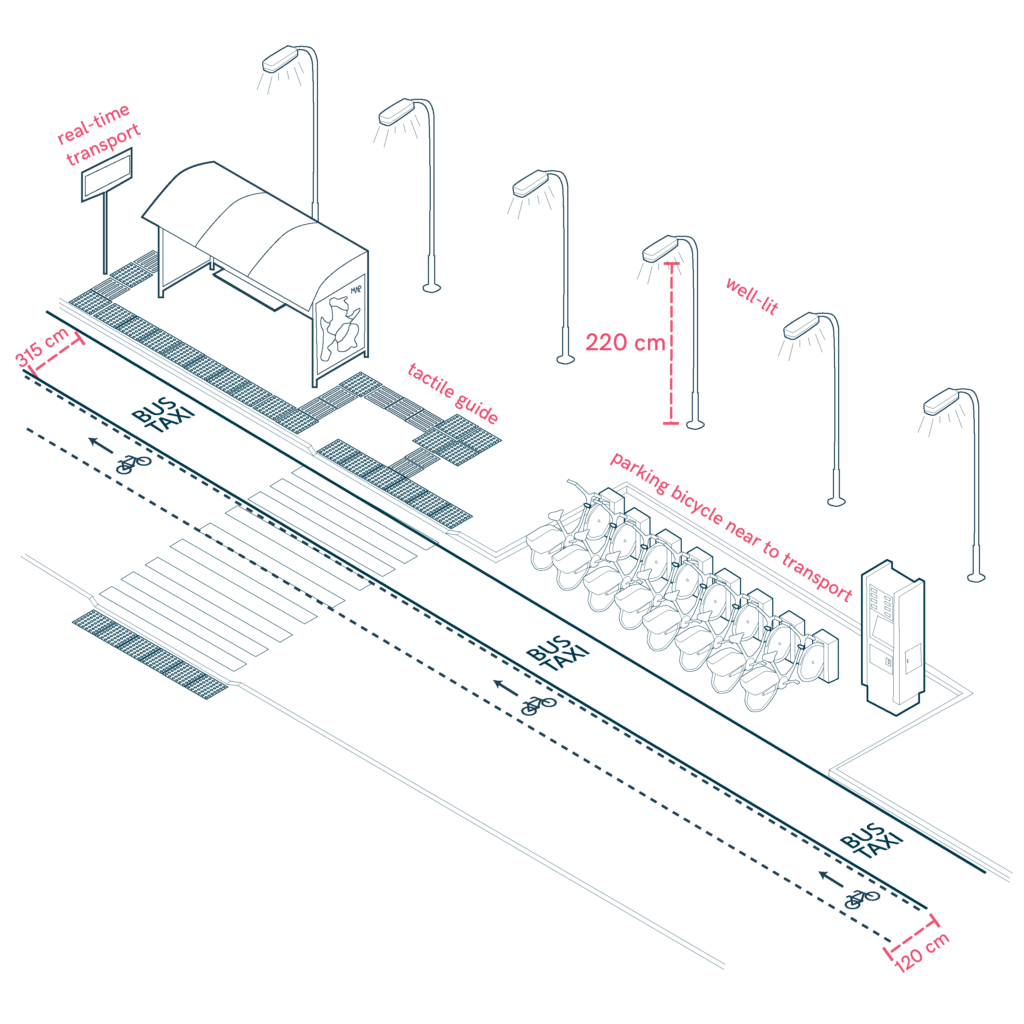Cyclist-Specific Infrastructure
Linking bike lanes with key public spaces and services is crucial for promoting cycling as a practical and sustainable mode of urban transportation. By connecting bike lanes to public transport stations, schools, parks, and commercial areas, cycling becomes a seamless part of the daily commute, encouraging more people to adopt bicycles for various trips.

- Install protected bike lanes that separate cyclists from motor vehicles and pedestrians.
- Connect bike lanes to public transport stations, parks, schools, and commercial areas for better accessibility.
- Provide bicycle parking facilities near key locations, with amenities like roofing, security, and real-time availability displays at transport hubs.
- Design bike routes to provide direct access to essential services, reducing mobility barriers and promoting cycling as a practical mode of transportation.
- Provide bicycle lockers at key transport hubs for secure storage, ensuring accessibility for all users.
- Regularly monitor lockers and shared bike systems to ensure usability and accessibility.
Sources
- https://accessible-eu-centre.ec.europa.eu/content-corner/digital-library/en-172102021-accessibility-and-usability-built-environment-functional-requirements_en
- https://www.iso.org/standard/71860.html
- https://www.t-l.ch/collectivites/guide-des-amenagements-pour-les-transports-publics-routiers-tl/
- https://www.leitfadenbarrierefreiesbauen.de/fileadmin/downloads/archiv/barrierefreies_bauen_leitfaden_en_bf_version2.pdf
- https://www.vitoria-gasteiz.org/http/wb021/contenidosEstaticos/especial/cea/20190917/Avance_PMSEP_2020_2030.pdf
- https://www.punt6.org/es/books/espacios-para-la-vida-cotidiana/
